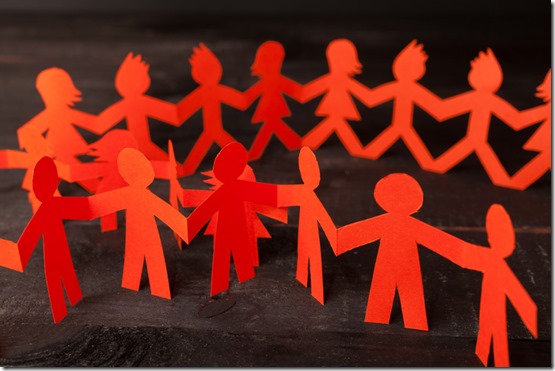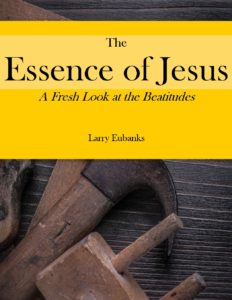
The Image of God as Male and Female
 This is an article I wrote for the blog Missio Alliance which appeared on their site last week. I repost it here for those of my readers who might have missed it. I encourage you all to check out Missio Alliance. They are a very cool organization and the writers on their blog our outstanding.
This is an article I wrote for the blog Missio Alliance which appeared on their site last week. I repost it here for those of my readers who might have missed it. I encourage you all to check out Missio Alliance. They are a very cool organization and the writers on their blog our outstanding.
God is spirit and has no physical form except in the incarnation of Jesus. This truth has led us to understand the imago dei in purely non-physical ways. Being made in the image of God, it is said, means that among the rest of creation only humans have souls.
Or that humans have free will and can act beyond mere instinct.
Or that only humans have the capacity to have dominion over the rest of creation.
Or that humans have an intellectual capacity far above any other animal.
Or some such.
While I don’t deny that any or all of these things may be true, I think that when interpreting Genesis 1:26-27, we jump to the spiritual too quickly and miss the most obvious meaning.
We look like God. Or, perhaps more to the point, God looks like us.
Elohim looks like a human. He doesn’t look like a bull. The Canaanites envisioned El as a bull, and there is some conjecture that the etymology of name Marduk, the chief Babylonian god, refers to a bull calf.
God doesn’t look like the gods of our oppressors, Genesis 1 is saying. But it is saying much more as well.
“So God created humankind in his image, in the image of God he created them; male and female he created them.” (Gen. 1:27 NRSV)
The image of God is neither male nor female, it is both. This too is a claim against the gods and goddesses of the idolatrous nations, and in particular the fertility cults and their gross exploitation of widows, weak men, orphaned boys and girls, and the unprotected alien.
God doesn’t act like that, Genesis 1 claims. He is a God who brings forth life, not violence.
This says something about humanity as well. The image of God is male and female. That means that no one individual fully bears the image of God. Inasmuch as any of us bears the imago dei it is in peaceful and loving relationship with each other, male and female, together.
That’s why it’s significant that in Genesis 1 it is not until it’s time to create humanity that the plural pronoun—or any pronoun, for that matter—is used.
In the first five days of creation it simply says that God made this and that, but when it comes time to create humanity, things change.
“Then God said, ‘Let us make humankind in our image, according to our likeness; and let them have dominion over the fish of the sea, and over the birds of the air, and over the cattle, and over all the wild animals of the earth, and over every creeping thing that creeps upon the earth.’” (Gen 1:26 NRSV)
Various explanations have been given—the plural Elohim refers to the heavenly host of gods of whom El was chief god; God was addressing the angels; the Persons of the Trinity were talking to themselves—but besides other weaknesses, none of these address the sudden shift to the plural that occurs in verse 26.
It would seem that there is a connection between the “us-ness” of God and the imago dei of humans.
Though it would be anachronistic to impose the New Testament understanding of the Trinity on any Old Testament text, we can see its essence in Genesis 1—that God’s nature is relational, if not at that time in three Persons then at least as male and female.
This is perhaps the most radical claim of Genesis 1, that the feminine is elevated to the same level as the masculine as part of the essence of God. This is a claim not only against the foreign gods but against the oppressive patriarchy prevalent in Israel and the surrounding cultures.
This roots gender equality in Creation, indeed in the very nature of God. No humanity can be recognized as being in the image and likeness of God if it diminishes the status of either male or female or lords one over the other.
Thus the second creation story is found to be compatible with the first, not in any reconciling of supposed historical or scientific facts but in its concluding assertion that husbands and wives come together and become one flesh.
When we move to the New Testament we see that the prominent role that women played in Jesus’ ministry wasn’t without precedent but was established in creation.
And that the gospel writers didn’t see this as a deviation from ancient Israelite religion but as part of the fulfillment of their faith as embodied in Jesus.
And that Paul, who everywhere in his writings recognizes that the highest aspirations of Israel’s prophets are summed up in Jesus, would have also recognized the radical freedom from oppression that women should have in the church, and that his statements regarding women should be interpreted in this light.
Indeed, in this light we can read Paul’s profoundly counter-cultural statement in Galatians 3:28 that Christ has destroyed the divisions between Jew and non-Jew, slave and free, male and female as the embodiment of the imago dei.
“For all of you are one in Christ Jesus.”
 I am a lifelong student of the Bible, and have been a pastor for over twenty-five years. My desire through this blog is to help people see things in the intersection of Scripture and real life that they might have missed. The careless handling of the Bible is causing a lot of problems in our churches and our culture--and is literally turning people away from the church, and, sometimes, God. I hope to treat Scripture with the respect it deserves, and, even if you don't agree with what I say, give you some insight.
Feel free to leave a comment. I promise to respond to you. All I ask is that you be respectful in your comments.
I am a lifelong student of the Bible, and have been a pastor for over twenty-five years. My desire through this blog is to help people see things in the intersection of Scripture and real life that they might have missed. The careless handling of the Bible is causing a lot of problems in our churches and our culture--and is literally turning people away from the church, and, sometimes, God. I hope to treat Scripture with the respect it deserves, and, even if you don't agree with what I say, give you some insight.
Feel free to leave a comment. I promise to respond to you. All I ask is that you be respectful in your comments. 
Connect with Me